
Since this blog is both for people in Maine and India, here is what it was like in Maine the day that I left. Kate and I had lunch at a local restaurant in the city of Caribou Maine (population 8.500). In front of the restaurant (near my car, which his in the picture) were 28 snowmobiles, these belonging to other people eating in the restaurant.
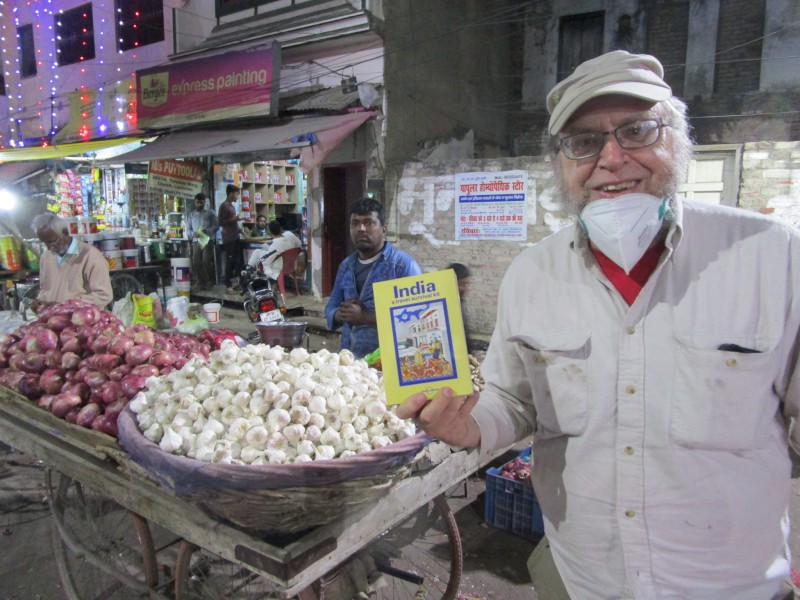
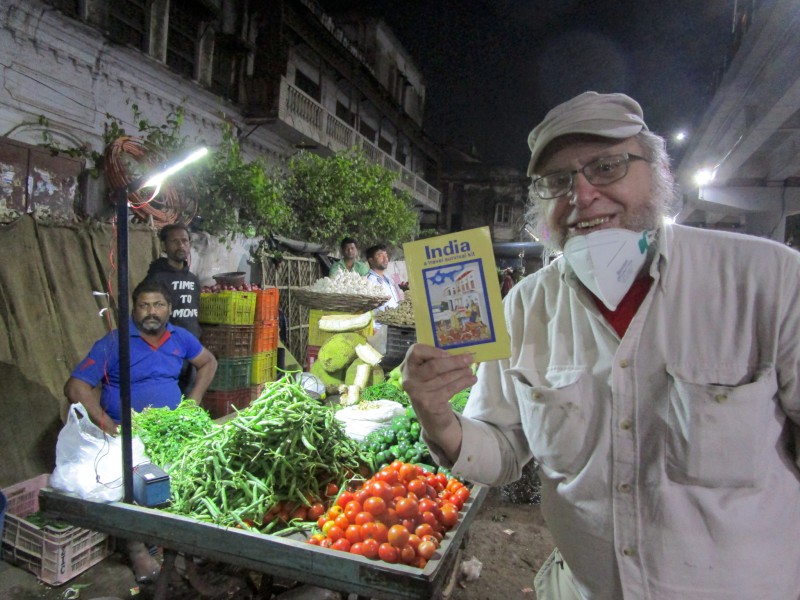
Quick change to India. I usually start these blogs with a picture me and me enroute at the start of the trip. But there was no real opportunity in the airplane: Crowded, for 13 hours, took about five days for me to get my sleep cycle back on track. On the Saturday of my first weekend in India, my colleague Arindam took me to the old center city of Lucknow. The main street has an enormous farmers market, with much else as well. The buildings here are quite old – often 1800s – quite large and many are not in good condition. The narrow allies behind these buildings are quite narrow, lined with some pretty fancy shops that sell jewelry, perfume and clothing.
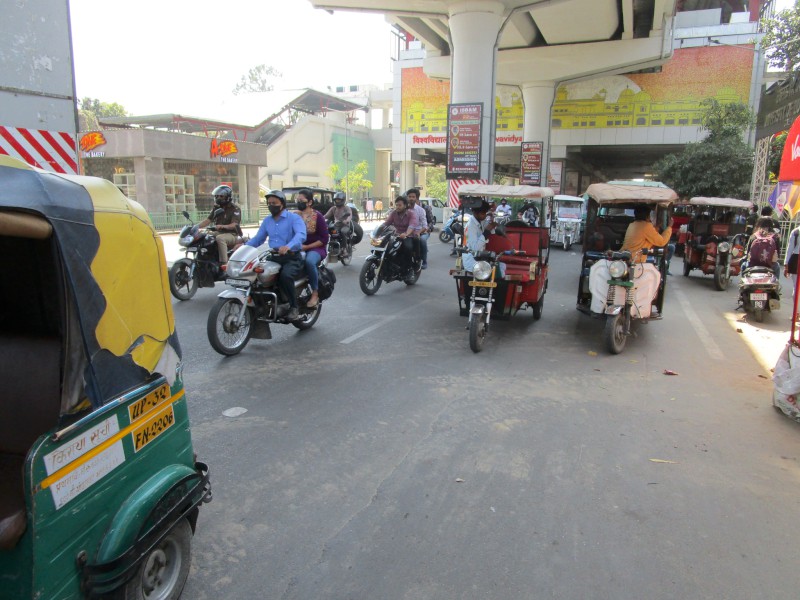
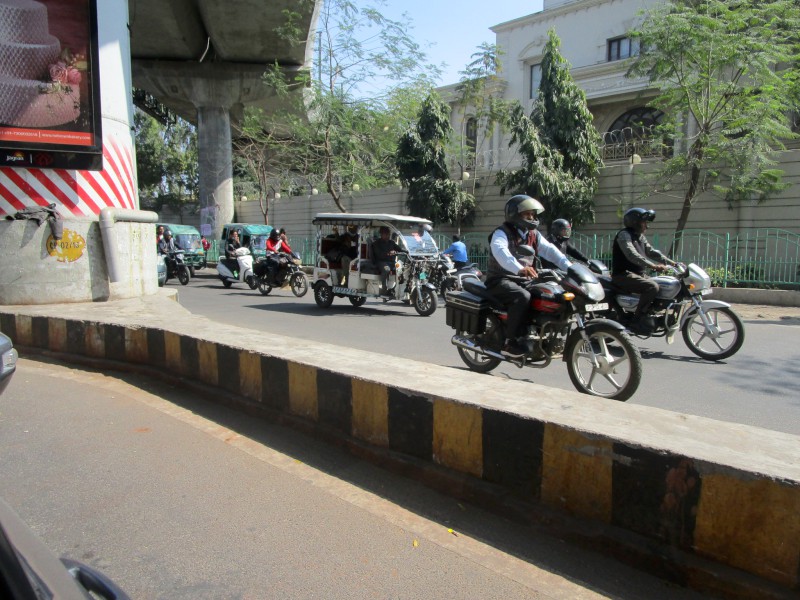
First experience in Lucknow (population 3.5 million) could not be more in contrast to Maine … the traffic. My pictures do not – cannot – capture this adequately. The main roads are an equivalent to our two lanes going each way, but the traffic is helter-skelter, seems like 4 vehicles abreast, traveling at break-neck speeds, horns blaring. There are no lanes, everyone is jostling for position to get into the gap between two vehicles in front, ever-ready to avoid pedestrians and other obstructions.

The traffic contains cars, motorcycles, bicycles, the 3-wheeled rickshaws (gasoline, electric or human-powered),some horse-drawn carts and people pushing (or here pulling by bicycle) their wares. It is NUTS. To be a pedestrian trying to cross the street is … #@&%$, there are no traffic lights, crosswalks, or pedestrian bridges / tunnels.
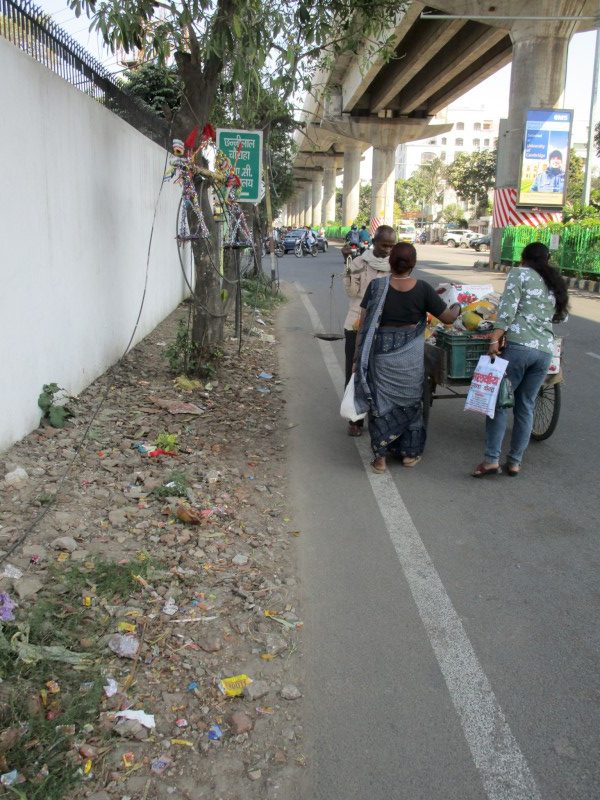
And you must walk along the side of and often within the street, because the flanks – what we would call an “emergency lane” is pretty much holes and rubble, full of tripping hazards. There are also many obstructions: the ubiquitous rickshaws waiting for business, or the cart here in the roadway selling vegetables, or people stopped in the roadway to buy stuff.
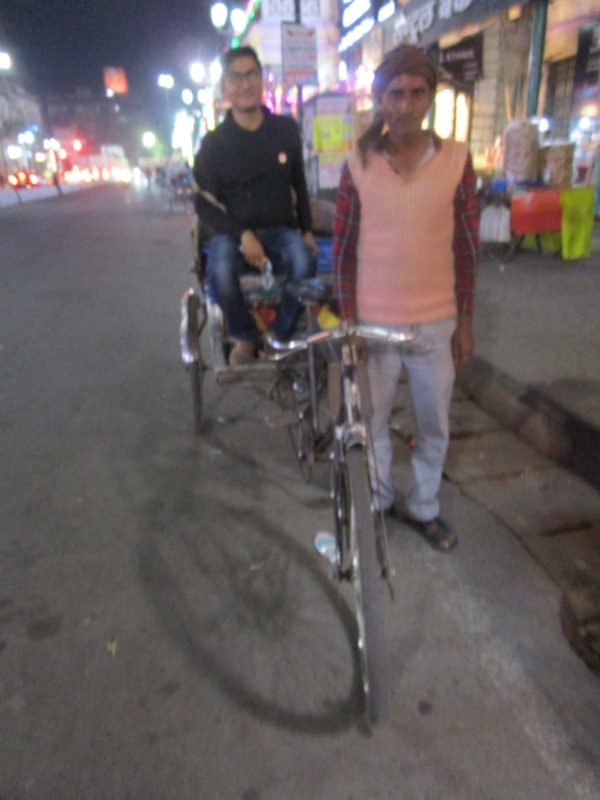
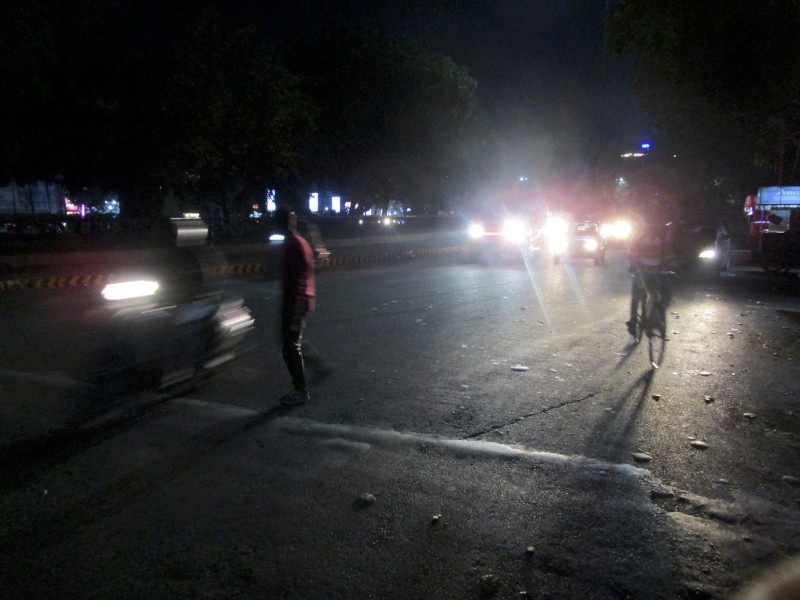
Pretty much the same at night, though there are fewer vehicles. I have now ridden in a human-powered rickshaw through this. Need I mention that the rickshaw had no lights?

There are everywhere along the roads people selling things. This person has a regular bathroom scale, and for 5 rupees (maybe 4 cents) I can weigh myself (97 kg, I think I have already lost some weight). Here is a picture also of someone shaving ice for drinks.

I have learned very quickly to avoid the roadways at all costs. Fortunately, there is a Metro line that connects where I live with where I work, with relatively short distances along the roadways. My ticket on the Metro is 9 rupees, about 7 cents.

Getting into the Metro requires that your bag and body get a pretty thorough search. Security is very much in evidence, everywhere. India has had its fair share of terrorism, including their “26/11” (Nov. 26th, our 9/11), a bloody four-day event in Mumbai, the Indian capital city. These are long remembered, there as in the U.S.

India has some 28 written languages, and others unwritten, which amounts to a lot of different cultures and cuisines. Here Arindam selects a chicken and a mutton dish – these meats are common in India, beef and pork are not for religious reasons, both Hindu and Moslem. You might note that this business is “established in 1897” – many businesses here go back a long ways.

Because my intestines are not well adjusted to all this, I must avoid anything that is uncooked. I also must be careful about bones – meats in India are cut differently than in the U.S., and sample gingerly. I like spicy food, but some dishes are well beyond my tolerance. The chicken was quite good, the mutton was quite spicy.